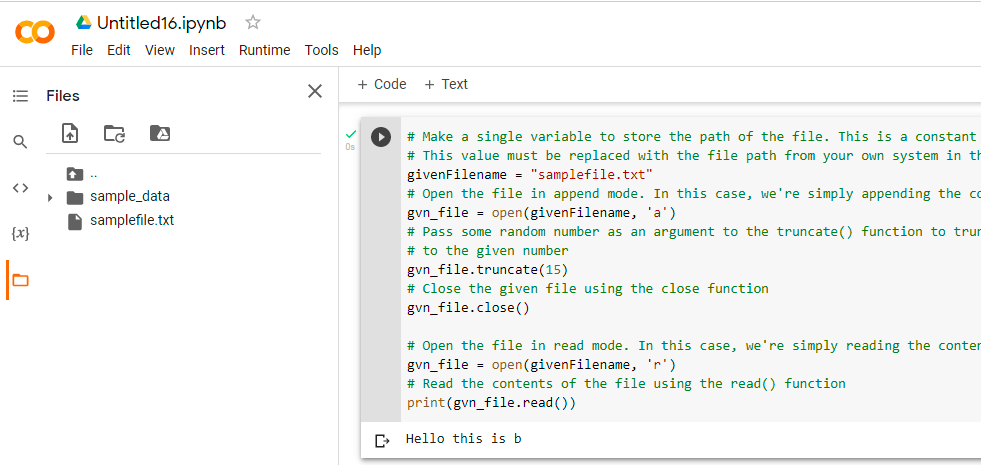Files in Python:
Truncate file python: One of the most important subjects for programmers and automation testers is Python file handling (also known as File I/O). It is necessary to work with files in order to write to or read data from them.
Also, if you didn’t know, I/O operations are the most expensive processes where a programme can go wrong. As a result, you must use extreme caution while implementing file processing for reporting or any other reason. Optimizing a single file action can help in the creation of a high-performing application or a reliable automated software testing solution.
Consider the following scenario: you’re planning to construct a large Python project with a large number of workflows. Then it’s unavoidable that you don’t make a log file. You’ll also be handling the log file’s read and write activities. Debugging huge applications with log files is a terrific way to go. It’s usually better to consider a scalable design from the start, as you won’t be sorry later if you didn’t.
File truncate() Method in Python:
Python file truncate: The truncate() method resizes the size of a file to the specified number of bytes.
If no size is given, the current position is taken.
Syntax:
file.truncate(size)
Parameters
size: This is Optional. The file’s size (in bytes) after truncation. The default value is None, which represents the current file stream position.
- Python Program to Count Number of Digits in a Text File
- How to run Python scripts
- Python Interview Questions on File Manipulation
File truncate() Method with Examples in Python
Approach:
- Make a single variable to store the path of the file. This is a constant value. This value must be replaced with the file path from your own system in the example below.
- Open the file in append mode. In this case, we’re simply appending the contents into the file.
- Pass some random number as an argument to the truncate() function to truncate the file lines to the given number.
- Close the given file using the close function.
- Open the file in read mode. In this case, we’re simply reading the contents of the file.
- Read the contents of the file using the read() function.
- The Exit of Program.
Below is the implementation:
# Make a single variable to store the path of the file. This is a constant value. # This value must be replaced with the file path from your own system in the example below. givenFilename = "samplefile.txt" # Open the file in append mode. In this case, we're simply appending the contents into the file. gvn_file = open(givenFilename, 'a') # Pass some random number as an argument to the truncate() function to truncate the filelines # to the given number gvn_file.truncate(15) # Close the given file using the close function gvn_file.close() # Open the file in read mode. In this case, we're simply reading the contents of the file. gvn_file = open(givenFilename, 'r') # Read the contents of the file using the read() function print(gvn_file.read())
Output:
Hello this is b
Original File Content:
Hello this is btechgeeks Good morning btechgeeks welcome to python-coding platform
File Content after truncating to the given number of bytes:
Hello this is b
Google Colab Images:
Files and Code:


